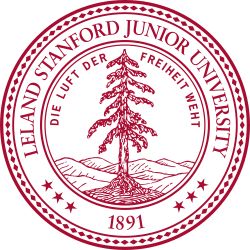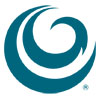Introduction and Overview
The University of North Dakota is the most comprehensive public research university in North Dakota, USA, and is also the main professional education and training center in the state. The school integrates undergraduate education, graduate education, academic research, creative activities and public service, and offers more than 225 highly accredited on-campus and online degree programs.
History and Founding Time
The school was founded in 1883 by the Dakota Territorial Congress, six years before the establishment of North Dakota. Classes began on September 8, 1884.
School Strength
Faculty: It has 823 academic staff members who can provide professional teaching and guidance to students.
Academic Achievements: About half of the doctors in North Dakota are trained by the University of North Dakota, and about 20% of Indian doctors in the United States are also from the school.
Teaching Resources: The school library has a rich collection of more than three million books, and also has a computer center, student counseling center, art center, atmosphere exhibition hall, natural history museum, art gallery health center, community center, etc.
Nature of the institution
Public research university.
Educational philosophy
Committed to providing an excellent educational experience, enriching the lives of North Dakotans and the global community through excellent teaching, innovative research and meaningful participation, inspiring students' curiosity, love of discovery and commitment to service, cultivating students' critical thinking and creativity, and making them lifelong learners and active citizens.
Key laboratories and disciplines
Key disciplines: The aviation flight major is world-renowned, with the world's largest non-military flight training group, which is allowed to use the McDonnell Douglas DC-8 air transport laboratory at the National Aeronautics and Space Center; the engineering major, especially the chemical engineering major, is strong; the occupational and physical therapy majors are also relatively outstanding; in addition, commercial flight, primary education, psychology, media and nursing majors are also very popular.
Key laboratories: The Center for Energy and Environmental Research is a leader in the development of clean and efficient energy and environmental technologies in the world, and there is also the Human Nutrition Research Center of the United States Department of Agriculture on campus.
Department
The school has eight colleges, namely the School of Aerospace Sciences, the College of Arts and Sciences, the School of Business Administration, the School of Education and Human Development, the School of Engineering and Mining, the School of Law, the School of Medicine and Health, and the School of Nursing.
Rankings
U.S. News & World Report ranked it as one of the "Top 200" universities in the United States, and its academic reputation ranked 144th in the United States in 2007.
It was ranked one of the top 100 universities in the United States by the Carnegie Foundation for the Advancement of Education.
Ranked 14th among the 25 universities with the strongest on-campus connections selected by the Princeton Review.
Ranked 150th by the National Science Foundation in 2024.
Expenses
Tuition at the University of North Dakota varies depending on factors such as major, degree level, and student status. Generally speaking, tuition for in-state students is relatively low, while tuition for out-of-state students and international students is higher. Taking 2024 as an example, tuition for in-state undergraduates per semester is about US$4,000, tuition for out-of-state undergraduates per semester is about US$9,000, and graduate tuition varies according to major and course. The school will provide students with certain scholarships and grants.
Campus Environment
Campus Facilities: The campus covers a total area of 521 acres, with more than 200 buildings, including modern teaching buildings, libraries, laboratories, student dormitories, canteens, etc. The sports facilities are complete, including swimming pools, ice rinks, sports tracks, gyms, gymnasiums, tennis courts, racquetball courts, golf courses, hockey fields, etc.
Campus Culture: The school focuses on creating an inclusive and diverse cultural atmosphere, and actively takes measures to ensure that all members of the campus community have a sense of belonging and fairness, and students from different regions and backgrounds can communicate and learn from each other here.
Campus Safety: The school has been rated as the safest university in North Dakota.
Surrounding Environment: The school is located in Grand Fork, North Dakota, a university town with a population of 50,000. It has a strong academic atmosphere and an elegant environment. It is surrounded by endless prairie scenes, and groups of wild animals can be seen from time to time, which is very spectacular.
-

Harvard University
-

Massachusetts Institute of Technology
-

South University
-

University of West Georgia
-

Stanford University
-

Northwest Nazarene University
-

Hawaii Pacific University
-

Shorter University
-

Nova Southeastern University
-

Saint Leo University
-

Mesoamerican University
-

Istmo University
-

Mariano Galvez University of Guatemala
-

Regional University of Guatemala
-

Galileo University
-

Francisco Marroquín University
-

Rafael Landívar University
-

University of the Valley of Guatemala
-

University of San Carlos of Guatemala
-

Technological Institute of Tlaxcala Plateau
-

Golfo University
-

Technological University of South Sonora
-

Technological University of Huejotzingo
-

Tizimín Institute of Technology
-

Chilpancingo Institute of Technology

